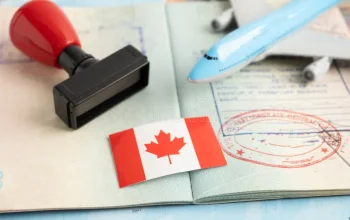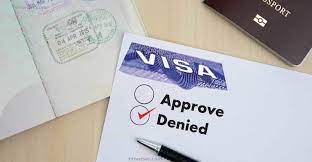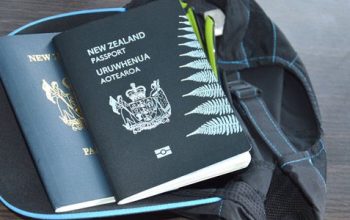Entering Canada from US Border
Entering Canada from the US is a common and exciting journey for many travelers. Whether you’re driving across, flying in, or even walking, the border-crossing process can seem daunting. But with a little preparation and knowledge, you can smoothly transition from one country to the next. In this guide, we’ll cover everything you need to know about entering Canada from the US, from the required documentation to tips for an efficient crossing. ENTERING CANADA FROM US BORDER
1. Understanding the US-Canada Border
The US-Canada border is one of the longest international borders in the world, spanning over 5,500 miles (8,891 kilometers). This boundary separates two of the most well-connected and cooperative nations, but crossing it still involves adhering to rules and regulations. Whether you’re heading north for a quick getaway or a longer stay, you must be aware of the necessary steps to enter Canada legally and efficiently.
2. Entry Requirements for US Citizens
If you’re a US citizen, entering Canada is relatively straightforward. You don’t need a visa, but you do need a valid form of identification. A passport is the most common form of ID, but in some cases, an enhanced driver’s license (EDL) or a trusted traveler card (like NEXUS or FAST) will suffice.
Still, you should double-check before crossing, especially if you’re planning to fly. Air travel always requires a passport. If you’re unsure whether your documents are enough, it’s better to be over-prepared than under-prepared.
3. Entry Requirements for Non-US Citizens
For non-US citizens, the rules are a bit more complex. If you’re living in the US on a visa or permanent residency, you’ll need your passport and possibly a Canadian visa or Electronic Travel Authorization (eTA) depending on your country of origin. Check with Canadian immigration to confirm your eligibility before attempting to cross the border. CANADA VISA FOR AUSTRIAN NATIONALS
4. Modes of Transportation
There are many ways to enter Canada from the US, and each has its own set of considerations. Most travelers opt for one of four methods: driving, taking a train, flying, or even walking across at certain border points.
5. Driving Across the Border
One of the most popular ways to enter Canada is by car. The road trip experience offers the convenience of flexibility and the opportunity to see beautiful scenery along the way. When you drive across the border, you’ll go through customs and immigration at one of the official border crossings. Be prepared for inspection—customs officers may ask questions about your trip, check your vehicle, and verify your documentation.
6. Popular Border Crossings by Car
There are many border crossings between the US and Canada, but some of the busiest and most popular include:
- Peace Bridge (Buffalo, NY to Fort Erie, ON)
- Rainbow Bridge (Niagara Falls, NY to Niagara Falls, ON)
- Blaine Crossing (Seattle, WA to Vancouver, BC)
These crossings often see high traffic, so try to time your arrival to avoid long waits, especially during peak travel times or holidays.
7. Crossing by Train
For those who prefer rail travel, entering Canada by train is an enjoyable and scenic option. Amtrak, in partnership with VIA Rail, offers routes that connect major cities in the US with destinations in Canada. The most popular route is the Adirondack Line, which travels from New York City to Montreal. You’ll still need to clear customs, so make sure you have your passport or appropriate documentation ready before boarding.
8. Flying into Canada from the US
Flying is another common way to enter Canada. When you land at a Canadian airport, you will pass through customs and immigration before being allowed to proceed to your final destination. Remember, even if you’re just transiting through a Canadian airport on your way to another country, you’ll need to clear customs.
Keep in mind that Canadian airports can have strict entry requirements, particularly related to COVID-19. Stay informed about the latest health protocols to ensure a smooth entry.
9. Border Crossing by Foot
While it may surprise some, it’s possible to cross into Canada on foot at a few specific border points. For instance, you can walk across the Rainbow Bridge from Niagara Falls, NY into Niagara Falls, ON. Walking across the border involves similar requirements to driving or flying, including proper identification and customs inspections. It’s a fun and unique way to experience the border, but make sure you’re ready for any weather conditions!
10. What to Expect at Customs
Regardless of your mode of transport, you’ll have to go through Canadian customs when entering the country. Customs officials will ask you questions about your travel plans, your reasons for entering Canada, and the contents of your luggage. They may also perform inspections of your vehicle or belongings. Be truthful in your answers and declarations—it’s better to over-disclose than risk being caught with something you shouldn’t have.
11. Prohibited and Restricted Items
Canada has strict rules about what can and cannot be brought across its borders. Some prohibited items include:
- Firearms and ammunition without proper permits
- Certain agricultural products, such as fresh fruits and vegetables
- Live animals (without proper documentation)
- Large amounts of alcohol or tobacco without declaring them
To avoid trouble, check the Canadian Border Services Agency (CBSA) website for a full list of restricted and prohibited items before you pack.
12. Currency Regulations
Traveling with cash? If you’re carrying $10,000 CAD or more (or its equivalent in other currencies), you must declare it to customs officials. Failing to do so could result in fines or even the seizure of your money. Currency declaration applies whether you’re entering or leaving Canada, so keep this in mind if you’re planning to take large sums of money across the border.
13. Pets and Animals
Bringing your furry friend into Canada? Make sure you’re familiar with Canada’s regulations on importing animals. Dogs and cats are typically allowed, but you’ll need to provide proof of vaccinations, particularly rabies. Other animals, such as birds, may require additional permits or health certificates. Some exotic pets are entirely banned from entry.
14. Traveling with Children
Traveling with minors requires special documentation. If both parents are present, a passport for the child is enough. However, if only one parent or guardian is traveling with the child, a notarized letter of consent from the absent parent may be required. This rule is in place to prevent child abduction, so ensure that your documents are in order before you reach the border.
15. COVID-19 Considerations
As of now, the COVID-19 pandemic has created additional entry requirements for those traveling between the US and Canada. These include:
- Proof of vaccination or a negative COVID-19 test, depending on current regulations
- Completion of the ArriveCAN app before crossing
- Adherence to quarantine or isolation rules, if applicable
Stay up to date on the latest COVID-19 border policies, as they can change quickly.
16. Safety Tips for Crossing the Border
Crossing the border can sometimes mean long wait times, especially during peak seasons. To avoid frustration, try these tips:
- Plan Ahead: Know the best time to cross to avoid long lines.
- Use Trusted Traveler Programs: If eligible, programs like NEXUS or FAST can help you speed through customs.
- Stay Informed: Check real-time border wait times online before you go.
Driving? Be prepared with a full tank of gas and some snacks in case you encounter a delay.
17. Post-Entry Tips
Once you’ve entered Canada, it’s essential to familiarize yourself with the country’s rules and regulations. Here are a few tips to make your stay smoother:
- Driving Laws: In Canada, speed limits are posted in kilometers per hour, so make sure you’re comfortable with the metric system.
- Insurance: Verify that your car insurance covers travel in Canada, or purchase temporary insurance if necessary.
- Cell Service: Check your phone plan to avoid international roaming fees when using data in Canada.
Conclusion
Crossing the border into Canada from the US can be an exciting adventure, but it requires preparation. By understanding the documentation requirements, choosing the best mode of transport, and staying informed about customs regulations, you’ll be ready for a smooth and stress-free experience. So pack your bags, grab your passport, and enjoy your journey to the Great White North!



